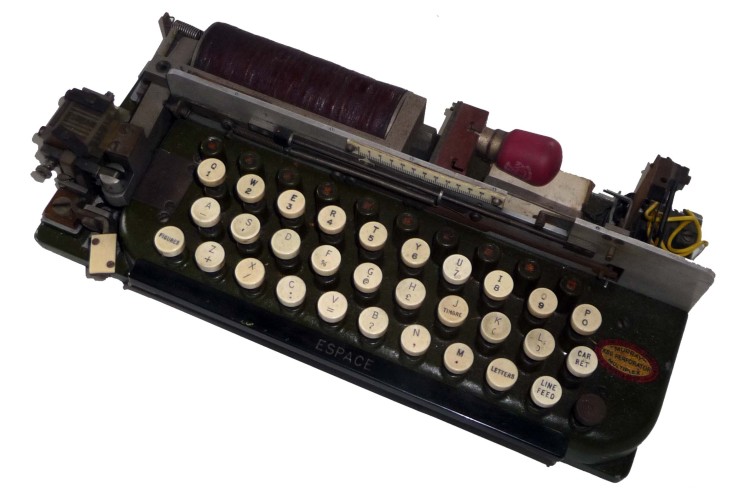Creed Murray Multiplex System - Perforator
| Home > Browse Our Collection > Peripherals > Miscellaneous > Creed Murray Multiplex System - Perforator |
|
The Murray Multiplex System
Date : 1924With the growth of Morse code and hand telegraphy there soon became a need to find faster means of transmission with less manual effort and greater accuracy. Hence the advent of machine telegraphy systems which whilst not using the traditional Morse code signals, generally used a five unit code. This code could basically be created by using a hand operated keyboard, but at much faster speeds than hand operated Morse code. Several earlier systems where invented, but the Murray Multiplex system (or affectionately known as MUX) was invented by a New Zealander, Donald Murray in 1901. Murray was born in 1866 and died in 1945. Donald Murray, a New Zealand farmer turned journalist, had invented the Murray multiplex system - another 5-unit code system - which had become popular in India, Australia, New Zealand, Brazil and Russia. Murray made a valuable contribution to telegraphy by rationalising the allocation of the combinations of the 5-unit code to the characters of the alphabet on a frequency-of-occurence basis. His arrangement of the code, in which the most frequently used letters of the alphabet are represented by the smallest number of holes in the tape, has since become standard practice. Murray’s Mulitiplex System and other telegraph patents were acquired by Creed in 1925 and these machines were produced at Croydon for many years. They were "Rolls-Royce" jobs and some of them are in service to this day. A Murray Keyboard Perforator is, in fact, still being used at Telegraph House. In 1926 came the introduction of the Creed Model 6S Automatic Tape Transmitter, the ancestor of the present standard Teleprinter Auto-Transmitter. A typical system would consist basically of four keyboards, four transmitters, four printers and one distributor at each end of the line. It is an automatic system worked on the duplex system providing up to four duplex arms giving a set of eight channels over a single circuit. Synchronised distributors divide the line time between several operators. Each channel on the Australian system was designated W X Y and Z The keyboard (QWERTY layout) mounted on metal base plate with relays and lamp is shown in the picture. The paper tape reel and document holder would have been mounted behind, often with a wooden cover the rear section. It would have been similar to the picture which was taken from http://www.telemuseum.org/teleprinters.html Manufacturer : Creed This exhibit has a reference ID of CH28831. Please quote this reference ID in any communication with the Centre for Computing History. |
|










